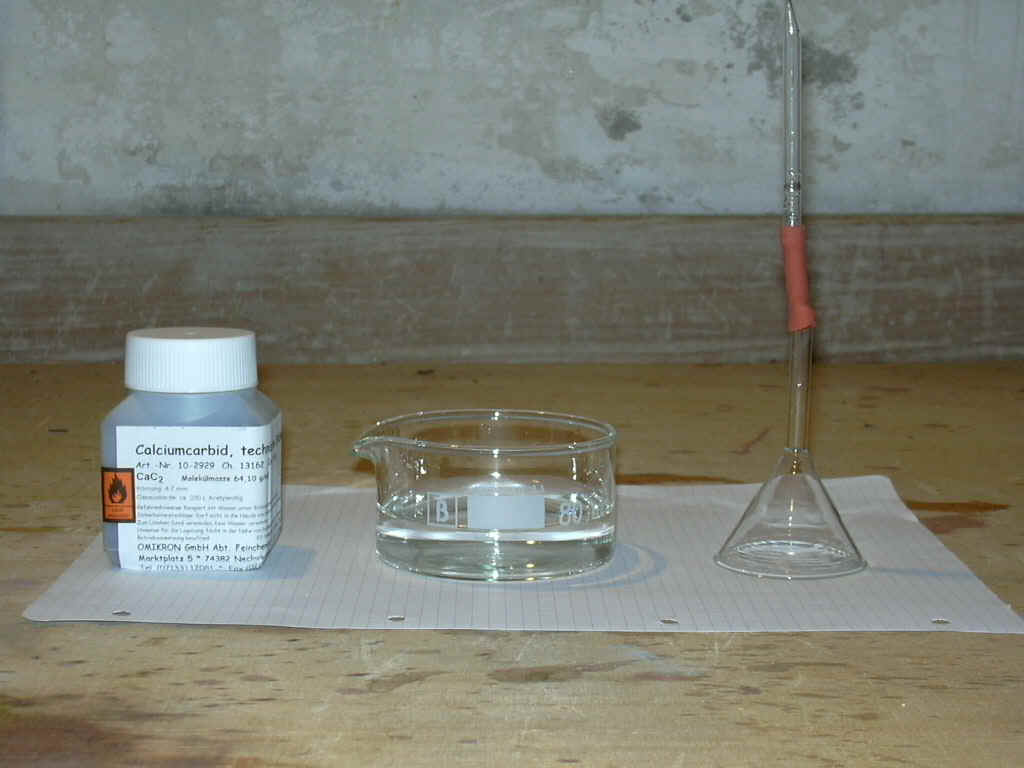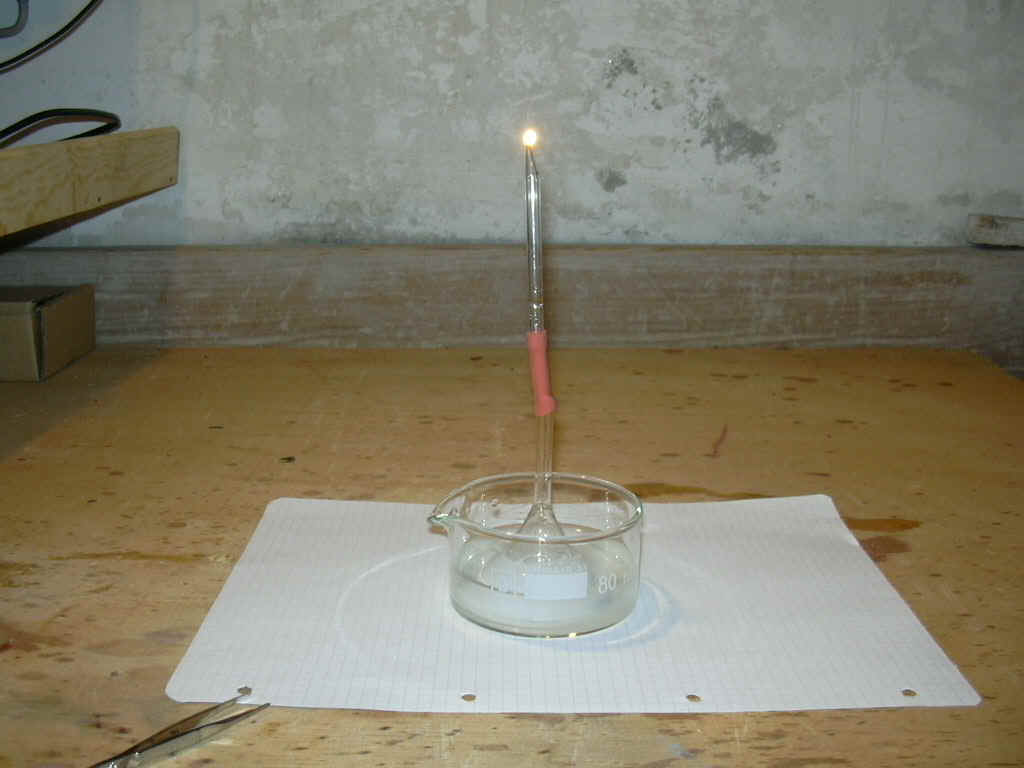Demonstration and combustion of acetylene
Chemicals needed
calcium carbide  F R 15 S (2)-8-43
F R 15 S (2)-8-43
tap water
Dangerous substance information
acetylene  F+ R 5-6-12 S (2)-9-16-33
F+ R 5-6-12 S (2)-9-16-33
Equipment needed
glass funnel
short piece of rubber tube
glass tube with nozzle
tweezer
source of fire or spark
wide beaker or a large crystallizing dish
Note (thanks to Desinfector): the danger of blowback can be markedly reduced if one stuffs the nozzle with a wad of steel wool!
Test procedure
Extinguish all flames! Provide for ventilation.
Preliminary Experiment
- Fill the beaker or dish about 2 cm high with water.
- With a tweezer put a very small piece of carbide into the water.
- The carbide piece fizzes and disintegrates thereby forming cloudy cords, a peculiar, repugnant smell escapes.
Experiment
- Using the rubber tube apply the nozzle to the end of the funnel.
- Add a not too big piece of carbide (not more than pea-size) to the water, quickly place the funnel upside down in the water, so that the fizzing piece is "captured" underneath. Hereby take care that the funnel stands, if necessary hold it. With this the developing gases are forced to escape through the nozzle where one can then ignite them.
- After a few seconds of gas formation, one ignites the escaping gas (caution!), it burns with a hot, bright shining light (do not stare at it too long). If the flame should go out before gas formation has ended, one ignites it again.
Disposal
The contaminated water can be discharged into the drainage.
Elucidation
CaC2 + 2 H2O --> Ca(OH)2 + C2H2
Ca(OH)2 + CO2 --> CaCO3 + H2O
Water decomposes calcium carbide into calcium hydroxide and acetylene. Calcium hydroxide forms together with the carbon dioxide dissolved in water, insoluble calcium carbonate. In a side reaction toxic, foul hydrogen phosphide is formed by the hydrolysis of calcium phosphide, which occurs as an impurity in technical carbide.
Photos

Calcium carbide (remove container before begin of experiment) and experimental apparatus

Acetylene burns with a bright flame, the water is heavily clouded.
The experiment is a demonstration derived from my school lessons.